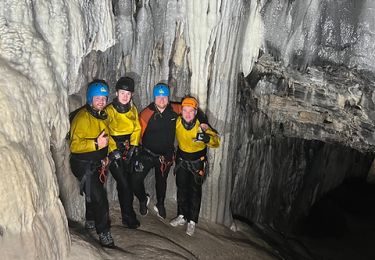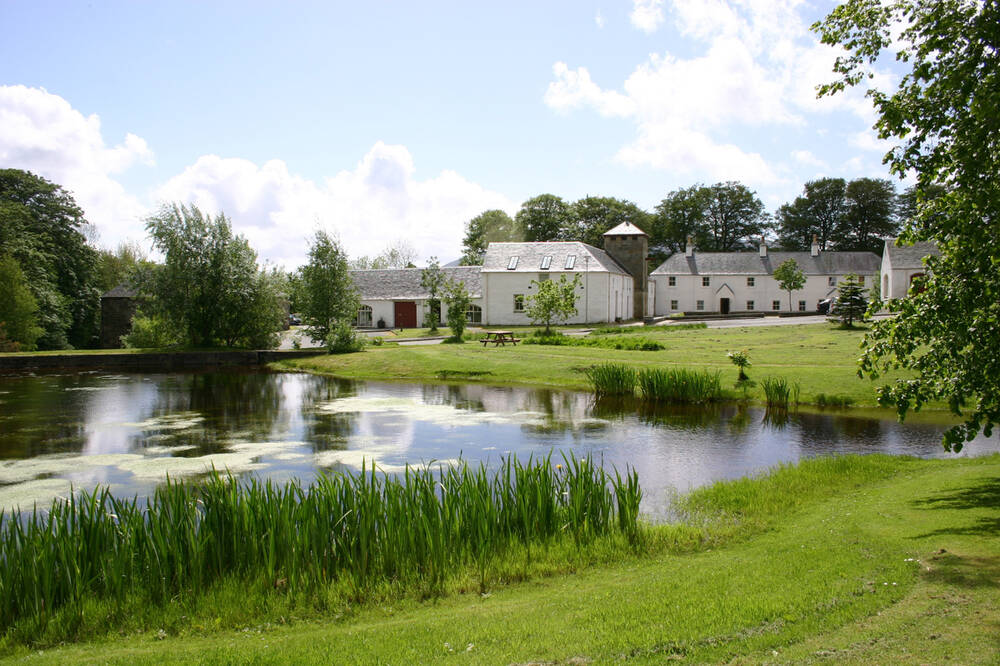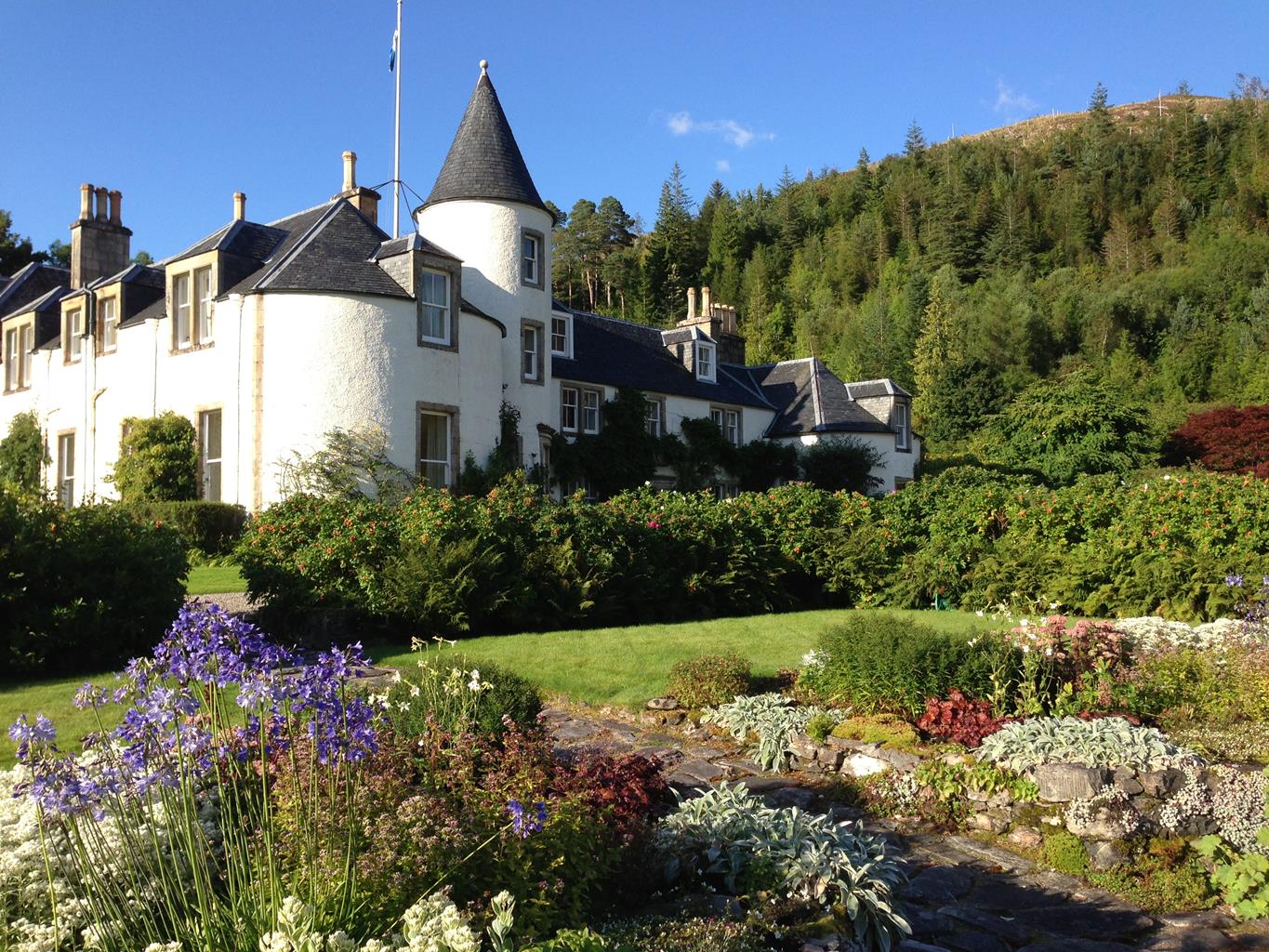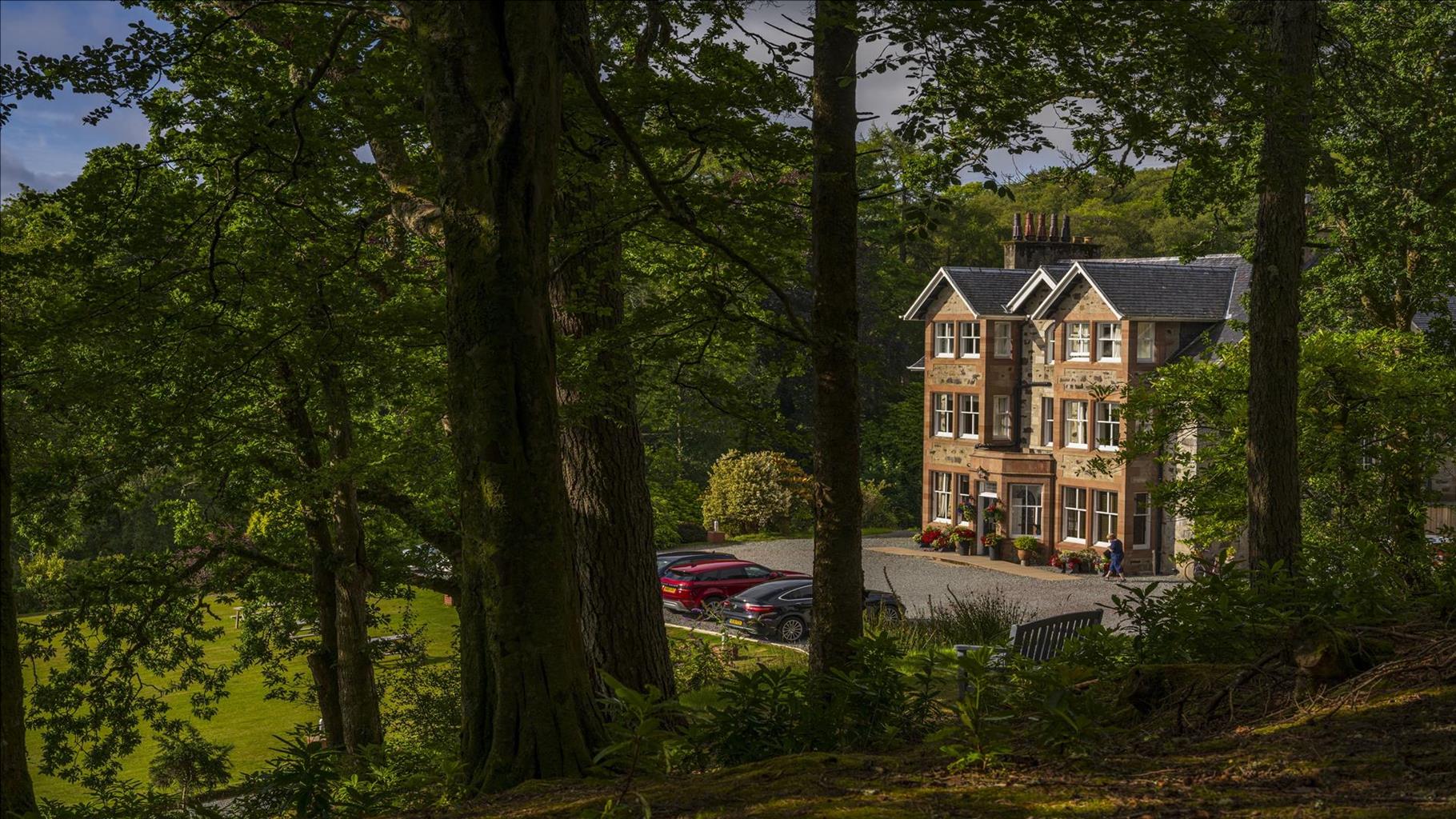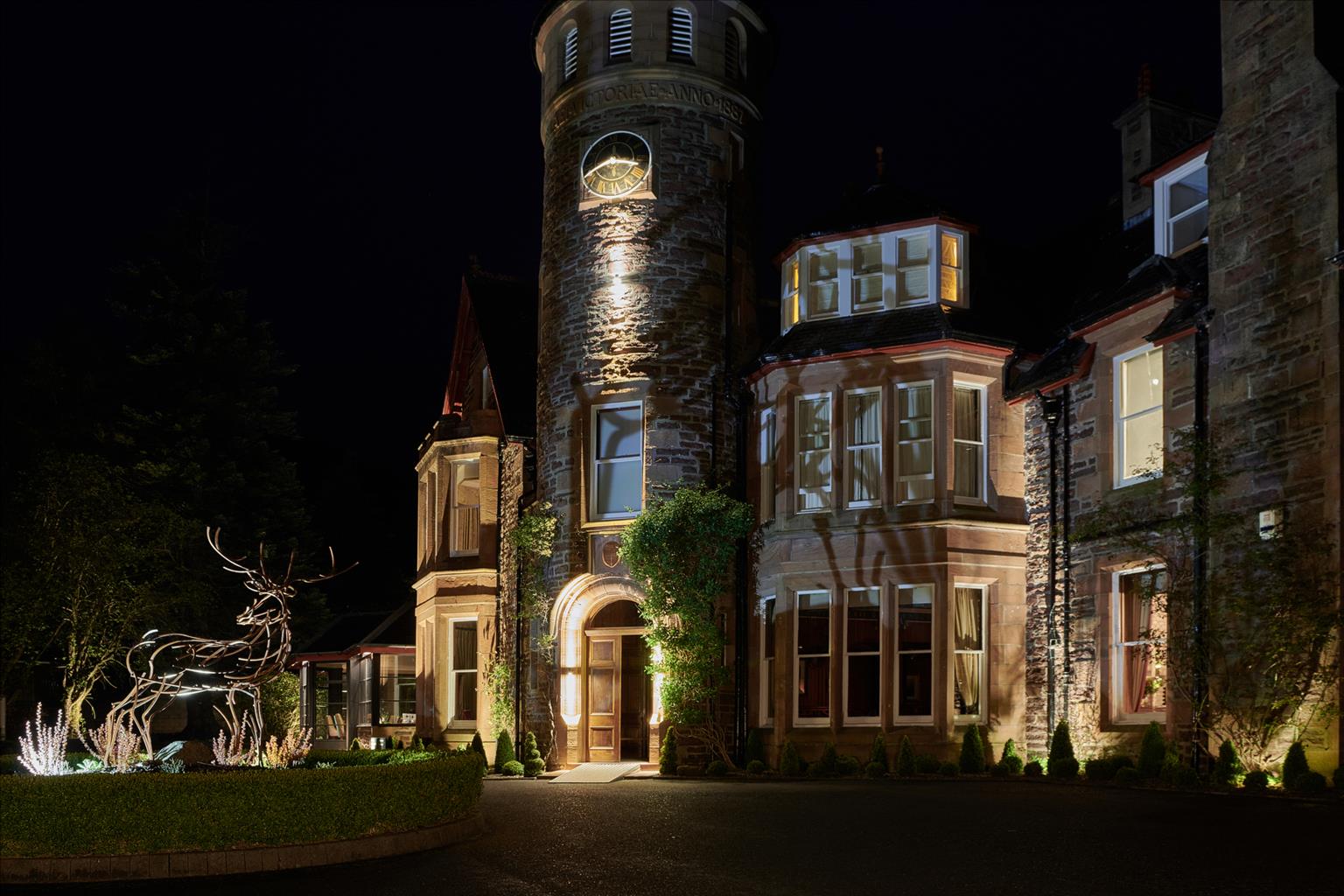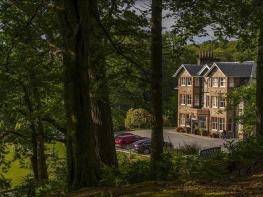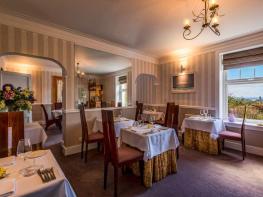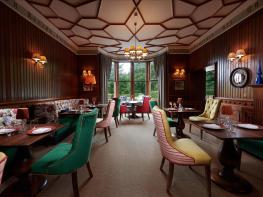Duisdale House Hotel is an award-winning, family run boutique hotel on Skye’s Sleat Peninsula.…
Our View
Dwarfed by the brooding hills surrounding Loch Duich, the castle of Eilean Donan stands picturesquely on its rocky island, at the point where three great sea lochs meet. A fortress was built here in 1220 by Alexander II to protect himself against raids by Vikings. During the Jacobite uprising the Macraes opted to support the Old Pretender and garrisoned a small force of Spanish soldiers in the castle. In 1719 the guns of an English man-of-war pounded the castle to pieces. It remained in ruins until 1912, when Colonel John Macrae decided to restore his ancestral home. Paying great attention to detail, the lakeside castle was lovingly rebuilt, along with an arched bridge that affords easier access to the castle than the ancient Macraes would have known. Most of the rooms in the castle are open to visitors, all furnished in the style of the home of a country laird. There are fine collections of pistols and powder horns, and, although it is mostly a 20th-century restoration, it allows the imagination to return to the time when the castle was owned by the wild Macraes. A fearsome clan, local legends tell how, on one occasion, they defended the castle successfully when outnumbered by their attackers 400 to one.
Facilities – at a glance
Refreshments
Features
- Cafe
- Opening Times: Castle & exhibition open Feb-Dec, daily 10-6 (last entry 5); visitor centre & coffee shop daily 12 Mar-27 Oct 10-5; gift shop Feb-Dec 10-5
Also in the area
About the area
Discover Highland
Apart from the Orkneys and the Shetlands, Highland is Scotland’s northernmost county. Probably its most famous feature is the mysterious and evocative Loch Ness, allegedly home to an ancient monster that has embedded itself in the world’s modern mythology, and the region’s tourist industry. Monster or no, Loch Ness is beautiful and it contains more water than all the lakes and reservoirs in England and Wales put together. The loch is 24 miles long, one mile wide and 750 feet deep, making it one of the largest bodies of fresh water in Europe.
At the very tip of the Highlands is John o’ Groats, said to be named after a Dutchman, Jan de Groot, who lived here in the early 16th century and operated a ferry service across the stormy Pentland Firth to Orkney. In fact, the real northernmost point of the British mainland is Dunnet Head, whose great cliffs rise imposingly above the Pentland Firth some two miles further north than John o’ Groats.
The Isle of Skye is the largest and best known of the Inner Hebrides. Its name is Norse, meaning ‘isle of clouds’, and the southwestern part of the island has some of the heaviest rainfall on the whole of the British coast. Despite this, it’s the most visited of all the islands of the Inner Hebrides. It’s dominated from every view by the high peaks of the Cuillins, which were only conquered towards the end of the 19th century.
Nearby stays
Places to Stay
Dining nearby
Restaurants and Pubs
Why choose Rated Trips?
Your trusted guide to rated places across the UK
The best coverage
Discover more than 15,000 professionally rated places to stay, eat and visit from across the UK and Ireland.
Quality assured
Choose a place to stay safe in the knowledge that it has been expertly assessed by trained assessors.
Plan your next trip
Search by location or the type of place you're visiting to find your next ideal holiday experience.
Travel inspiration
Read our articles, city guides and recommended things to do for inspiration. We're here to help you explore the UK.







